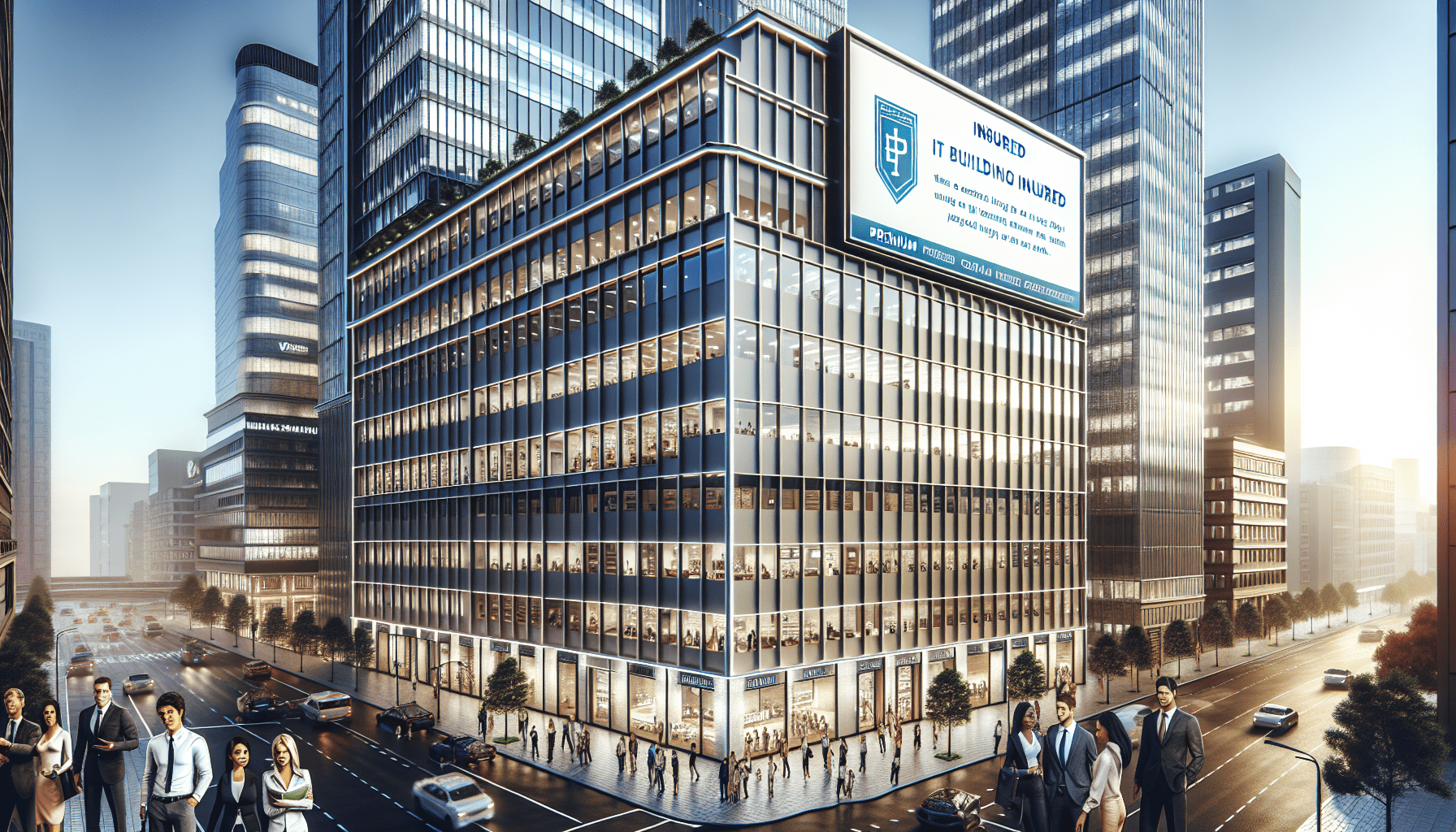Building Insurance Mistakes
Could underinsurance and overlooked exclusions bankrupt your property investments by 2025?
The prospect of financial ruin due to inadequate building insurance is a looming reality for many property investors. As the landscape of risk evolves with climate change, technological advancements, and regulatory shifts, the pitfalls of underinsurance become increasingly perilous.
Overlooking key exclusions or failing to update coverage to reflect the true value of properties can lead to catastrophic financial consequences, particularly when a major incident exposes the gaps in protection.
It’s essential for property owners to regularly review and adjust their insurance policies to ensure they’re fully covered against all potential risks. Building insurance is your financial shield against disasters, yet 2025’s evolving risks—climate change, cyber threats, and inflation—demand unprecedented vigilance.
A single oversight could cost millions. In this article, we dissect the costliest building insurance mistakes of 2025, revealing hidden pitfalls, debunking myths, and arming you with actionable strategies to safeguard your assets.
Why Building Insurance Mistakes Will Dominate 2025 Headlines

As we venture deeper into the decade, the complexities of building insurance are becoming increasingly intricate, with new regulations and climate considerations adding layers of complication. In 2025, property owners are finding themselves navigating a minefield of potential errors, from underestimating coverage needs to neglecting emerging risks such as cyber threats.
These mistakes are not just simple slip-ups; they are costly miscalculations that can lead to devastating financial consequences, often leaving businesses and investors scrambling to recover.2025 marks a tipping point for property owners.
According to a 2024 JPMorgan Chase report, global insured losses from natural disasters have doubled since 2020. Meanwhile, cyberattacks on smart buildings surged by 63% (Forbes, 2023), and rebuilding costs outpace inflation by 8% annually (Wall Street Journal). Underestimating these risks isn’t just careless—it’s catastrophic.
Debunking 5 Deadly Myths About Building Insurance in 2025
Myth 1: “Market Value Equals Rebuild Cost”
Fact: Market value and rebuild cost are two distinct figures that should never be confused. The market value is influenced by a variety of factors including location, land value, and the current real estate market conditions, which do not directly correlate with the actual costs to rebuild a structure.
Rebuild costs, on the other hand, are determined by the price of construction materials, labor rates, and the specific design and features of your building. Ignoring this distinction can lead to significant underinsurance, leaving property owners vulnerable to substantial financial loss should they need to reconstruct after a disaster.
Market value includes land, while rebuild costs cover labor, materials, and code upgrades. A 2025 MIT study found 70% of commercial properties are underinsured by 40%+ due to this error.
Myth 2: “All Perils Are Covered in Standard Policies”
Fact: Many property owners labor under the misconception that a standard insurance policy is a catch-all safeguard against any form of disaster that might befall their property. However, the reality is that typical policies often come with a litany of exclusions.
For instance, damage from earthquakes and floods are frequently not covered under standard policies, necessitating additional riders or separate insurance to ensure full protection against these specific perils. Floods, earthquakes, and cyber breaches often require separate riders. A 2023 FEMA audit revealed 58% of flood claims were denied due to policy exclusions.
Myth 3: “Older Buildings Are Automatically High-Risk”
Fact: While it’s true that older buildings can be more susceptible to certain risks due to outdated construction methods or materials, it’s not an automatic classification. Risk assessments take into account a variety of factors, including renovations, structural updates, and compliance with current building codes.
Therefore, an older building that has been well-maintained and upgraded can sometimes be considered lower risk than a newer building that has been neglected or constructed with inferior materials.
Modernized structures with IoT sensors (e.g., leak detection) often qualify for discounts. Zurich Insurance offers 15% premiums cuts for AI-driven risk mitigation.
Myth 4: “Tenant Liabilities Are the Tenant’s Problem”
Fact: While it’s true that tenants are responsible for maintaining their own liability insurance, property owners should not overlook the indirect impact that tenant activities can have on the overall risk profile of the property.
For instance, a tenant’s negligence could lead to significant damage that affects the integrity of the building and, consequently, the owner’s insurance premiums.
It is therefore prudent for property owners to ensure tenants have adequate coverage and to regularly review the terms of lease agreements to include clauses that protect the owner’s interests in the event of tenant-caused incidents. Landlords remain liable for injuries from neglected maintenance. In 2024, a NYC landlord paid $2.3M after a tenant’s balcony collapse.
Myth 5: “Cyberattacks Only Affect Data Centers”
Fact: This common misconception underestimates the vast reach of cyber threats. In reality, cyberattacks can target any device connected to the internet, not just those housed in data centers.
This includes personal computers, smartphones, and even smart home devices. The IoT (Internet of Things) has expanded the attack surface dramatically, making cybersecurity a pressing concern for individuals and businesses alike.
As technology continues to evolve, the potential points of vulnerability multiply, necessitating more robust and adaptive security measures to protect sensitive information and maintain privacy. Smart HVAC and security systems are hackable. A 2024 IBM report linked 32% of ransomware attacks to building management systems.
Top 5 Google Search Queries on 2025 Building Insurance

1: “Does building insurance cover climate-related damage in 2025?”
Answer: Insurance policies have rapidly evolved to address the escalating risks associated with climate change. While many insurers are now offering coverage for climate-related damage, the extent of the coverage can vary significantly between policies.
Property owners are encouraged to closely review their insurance contracts and possibly consult with an expert to ensure that their coverage is adequate for the specific threats their building may face in 2025, such as extreme weather events or rising sea levels. Only if specified. Add “green endorsements” for floods/wildfires.
2: “How to calculate rebuild costs accurately?”
Answer: To accurately calculate rebuild costs, it’s essential to consider several factors that go beyond the basic square footage of the property. Current construction costs, local building codes, and the quality of materials desired for the rebuild must all be factored into the equation.
Additionally, it’s wise to account for potential changes in the market and to include a buffer for unexpected expenses that often arise during construction projects.
By taking a comprehensive approach to estimating these costs, property owners can better prepare for the financial investment required to restore their building to its former state or better in the event of a disaster. Use tools like Marshall & Swift’s Cost Calculator or hire a certified appraiser.
3: “Are drones covered under building insurance?”
Answer: Continuing from the previous section, it’s essential to understand that drones, while increasingly used for building inspections and surveillance, may not automatically be covered under a standard building insurance policy. Property owners should verify with their insurance providers whether drones are included within their coverage or if an additional policy is necessary.
Given the potential risks and liabilities associated with drone operations, such as accidental damage or privacy infringement, it’s crucial to ensure they are adequately insured to avoid unexpected out-of-pocket expenses. Only if “aerial equipment” is listed. Amazon’s drone delivery hubs added this clause in 2024.
4: “Can AI lower my premiums?”
Answer: Absolutely, AI can play a significant role in lowering insurance premiums, particularly in the realm of drone operations. By leveraging predictive analytics and real-time data, AI systems can assess risk with greater precision, enabling insurers to tailor policies more closely to the actual risk profile of drone activities.
This means that safer drone operations, informed by AI-driven insights, can potentially benefit from lower premiums as they present a reduced risk to insurers. Yes. AI-driven risk models (e.g., Cape Analytics) reduce claims by 22%, per McKinsey.
5: “What’s the #1 mistake in 2025 policies?”
Answer: The number one mistake in 2025 policies is the underestimation of AI’s rapid advancement and its impact on risk assessment. Many insurers are still clinging to outdated models that fail to account for the dynamic nature of AI personalization in various industries.
This oversight not only hampers their ability to offer competitive rates but also exposes them to greater risks as they might not be adequately prepared for the sophisticated threats and challenges that come with advanced AI applications.
As a result, insurers who do not adapt may find themselves at a serious disadvantage in an increasingly data-driven market. Ignoring “ordinance or law” coverage, which pays for code upgrades post-disaster.
5 Tactical Tips to Avoid 2025 Insurance Disasters

1: Audit Annually: Embrace AI Personalization: In the competitive insurance landscape, personalization is key to customer retention and acquisition. Leverage AI to analyze customer data, predict individual needs, and tailor policies accordingly.
This not only enhances the customer experience but also streamlines risk assessment, enabling insurers to offer more accurate and cost-effective coverage. By staying ahead of the curve with AI-driven personalization, insurance companies can ensure they meet the evolving expectations of their policyholders. Reassess rebuild costs with tools like CoreLogic’s RSMeans.
2: Demand Cyber Riders: As digital threats continue to escalate, insurers must adapt by incorporating cyber riders into their policies. These specialized add-ons provide additional protection against cyber incidents, such as data breaches and ransomware attacks, which are becoming increasingly common.
By integrating these riders, insurers not only offer peace of mind to their clients but also position themselves as proactive protectors in a digital age where cybersecurity is no longer optional but essential. Insist on coverage for IoT breaches (e.g., Honeywell’s $5M claim in 2024).
3: Leverage Telematics: By harnessing the power of telematics, insurance companies can tap into a wealth of real-time data that provides insights into driver behavior, vehicle health, and environmental conditions.
This information enables insurers to tailor policies more accurately to individual risk profiles, rewarding safe drivers with lower premiums and creating incentives for riskier ones to improve their habits.
Moreover, telematics facilitates the swift resolution of claims, as data from an incident can be quickly analyzed to determine fault, reducing fraud and streamlining the claims process. Install sensors for real-time risk data; insurers like Allstate reward this.
4: Negotiate “Blanket Coverage”: Embrace Predictive Analytics: The power of predictive analytics cannot be overstated when it comes to personalizing insurance policies. By leveraging historical data and machine learning algorithms, insurers can forecast potential risks and tailor coverage options that align closely with individual customer profiles.
This proactive approach not only enhances customer satisfaction by providing them with relevant protection but also helps in mitigating losses for the insurer through more accurate risk assessment. Bundle multiple properties to avoid gaps.
5: Pre-Disaster Mitigation: Leveraging AI for pre-disaster mitigation enables insurers to anticipate and prepare for potential natural disasters before they occur. By analyzing vast datasets that include historical weather patterns, geographic information, and even social media trends, AI can predict the likelihood of events such as hurricanes, floods, or wildfires.
This advanced warning system allows both insurers and policyholders to take preemptive measures, such as reinforcing structures or evacuating areas, thereby minimizing damage and reducing the number and severity of claims. Retrofit for wildfires/floods. FEMA grants cover 75% of costs.
The Rising Threats You Can’t Afford to Ignore

Climate Change and the “Uninsurable” Property Crisis
As climate patterns continue to shift unpredictably, the insurance industry is grappling with an increasing number of properties falling into the “uninsurable” category.
These properties, often located in regions highly susceptible to wildfires, floods, or other natural disasters exacerbated by climate change, present a significant challenge for homeowners and insurers alike.
The financial implications are profound, as both parties must navigate the complex landscape of risk assessment, policy pricing, and potential loss mitigation strategies to protect their investments and livelihoods in the face of these rising threats. By 2025, 12% of U.S. homes will be uninsurable due to wildfire/flood zones (Reuters). Solutions:
1: One of the most promising solutions to this challenge lies in the realm of AI personalization. By leveraging the power of artificial intelligence, insurance companies can analyze vast datasets to identify patterns and predict risk with unprecedented accuracy.
This enables insurers to tailor policies to the individual needs and risk profiles of their clients, ensuring that coverage is both adequate and equitable.
AI-driven personalization not only enhances the customer experience by providing bespoke insurance products but also helps insurers to price policies more effectively, potentially making insurance accessible to those in high-risk areas who might otherwise be deemed uninsurable. Parametric insurance (pays out based on event triggers, e.g., wind speed).
2: AI personalization extends beyond the realm of policy pricing and product offerings; it also revolutionizes the claims process. By harnessing the power of machine learning and data analytics, insurers can expedite claims assessments and payouts, reducing the stress on policyholders following an adverse event.
Furthermore, AI-driven chatbots and virtual assistants provide round-the-clock support, guiding customers through the intricacies of filing claims and answering queries, which enhances customer satisfaction and loyalty. Microgrids to reduce fire risks (PG&E’s 2024 rollout).
Cyber-Physical Risks in Smart Buildings
The integration of AI into smart building management systems presents a double-edged sword. While it offers the promise of optimized energy consumption, predictive maintenance, and enhanced security, it simultaneously introduces cyber-physical risks that could lead to new vulnerabilities.
As buildings become increasingly interconnected and reliant on AI algorithms, the potential for cyberattacks that could compromise not just data but also physical infrastructure becomes a pressing concern. It is essential that as these technologies advance, robust cybersecurity measures evolve in tandem to safeguard against such threats.
Hackers can disable fire alarms or elevators. Case study: A Las Vegas casino paid $4.5M in 2024 after a ransomware attack locked guests indoors.
Inflation and the “Coverage Gap”
As artificial intelligence continues to permeate every aspect of our lives, we must address the economic implications it brings, particularly in the realm of insurance and coverage.
The “Coverage Gap” refers to the disparity between traditional insurance policies and the emerging risks associated with AI personalization, leaving businesses and individuals vulnerable to new forms of cyber threats that may not be adequately covered.
With the rapid pace of technological change, insurers are scrambling to update their offerings, but the lag can result in significant financial exposure, as was starkly highlighted by the costly incident at the Las Vegas casino. Construction costs rose 14% in 2024 (U.S. Bureau of Labor Statistics). Tip: Add 25% to your rebuild estimate.
Expert Insights and Tools
Warren Buffett on Risk: “It’s insane to cut insurance costs without cutting risks.”
- Tools:Riskalyze: AI for predicting underinsurance.ZestyAI: Climate risk modeling.
- Case Study: Navigating the complexities of insurance in the face of climate change requires more than traditional models; it demands innovative approaches that leverage the latest in artificial intelligence.
- ZestyAI harnesses this power through sophisticated algorithms that analyze vast datasets, from historical weather patterns to the architectural specifics of individual properties, to provide a nuanced view of potential risks.
- This level of detail enables insurers to offer policies that are not only more accurate in terms of risk assessment but also more personalized to the policyholder’s unique situation, ensuring that coverage is both adequate and cost-effective. Disney’s 2024 policy saved $200M by covering pandemic-related closures under “business interruption” clauses.

FAQs: Your 2025 Insurance Dilemmas Solved
1: Q: Will my policy cover drone damage?
A: As drone usage becomes increasingly common, insurance providers have adapted their policies to include drone-related incidents. Whether it’s damage caused by a drone crashing into your property or liability for a drone you’re operating, you’ll find that most comprehensive policies now offer coverage options for these scenarios.
It’s essential to check with your insurer for the specifics, as coverage limits and exclusions can vary widely depending on the provider and the policy you choose. Only if “aerial liability” is added.
2: Q: How does AI lower premiums?
A: AI has the potential to significantly lower premiums by streamlining the risk assessment process and enabling more accurate pricing. By analyzing vast amounts of data, including historical claims and real-time information, AI algorithms can identify patterns and predict risks with greater precision than traditional methods.
This allows insurers to tailor policies more closely to the individual risk profile of each customer, potentially reducing the cost for those with lower risk factors.
Furthermore, AI-driven automation in claims processing and customer service can lead to operational efficiencies, resulting in cost savings that insurers can pass on to policyholders in the form of lower premiums. Predictive analytics reduce claims; ask insurers about AI partnerships.
3: Q: Are green buildings cheaper to insure?
A: Indeed, green buildings often present a unique opportunity for insurers to offer more competitive rates. The incorporation of sustainable materials and energy-efficient systems not only reduces the environmental footprint but also minimizes risks associated with fire, water damage, and structural integrity.
As a result, insurers may lower premiums for properties that adhere to green standards, recognizing the reduced likelihood of costly claims stemming from these advancements in building technology. Yes—LEED-certified buildings get 18% discounts (Forbes).
Conclusion
In light of these incentives, property owners and developers are increasingly motivated to invest in sustainable construction practices. Not only does this shift align with global environmental goals, but it also offers tangible financial benefits.
By embracing green building standards, stakeholders can enhance property value, attract eco-conscious tenants and buyers, and secure a competitive edge in a market that is progressively prioritizing sustainability.
The costliest building insurance mistakes of 2025 stem from outdated assumptions and overlooked riders. By embracing AI, parametric policies, and proactive audits, you can dodge financial ruin.
Ready to future-proof your coverage? Share your biggest insurance challenge below, and download the 2025 Risk Mitigation Checklist to start saving.

